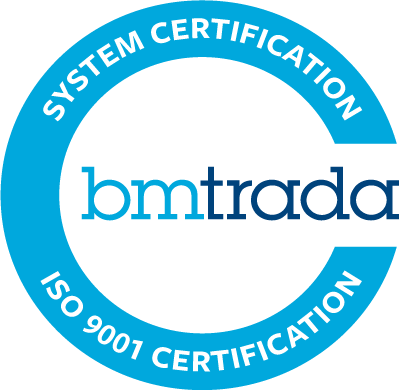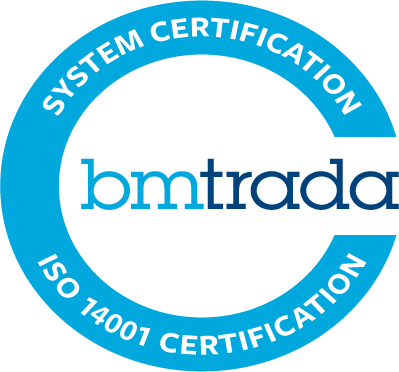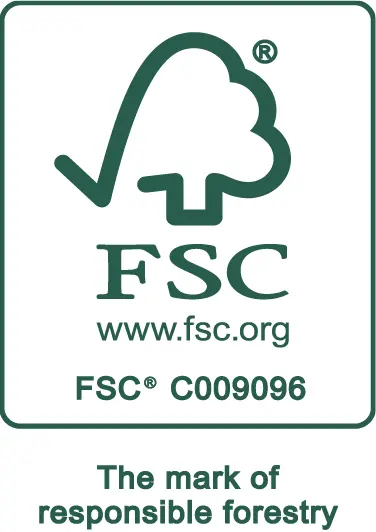Specification
Plywood used in the UK is sourced from all over the world and is often manufactured to overseas standards. Plywood manufactured for construction purposes is specified in accordance with EN 636. Products claiming compliance with this standard must also carry the specified markings, which includes a reference to EN 636. This standard was originally in three parts, but was re-issued in 2003 in a single part as follows:
EN 636 : 2003 : Plywood – Specifications
The 2003 edition of EN 636 retains the designations -1, -2 and -3 from the previous three part standard to represent dry, humid or exterior conditions of use.
The environmental conditions for which each of these types of plywood are considered suitable are defined according to the parameters laid down for Use Classes in BS EN 335 Durability of wood and wood-based products. Use classes: definitions applicable to solid wood and wood-based products.
Dry conditions: for interior applications with no risk of wetting, defined in use class 1, with a moisture content corresponding to environmental conditions of 20°C and 65% relative humidity.
Humid conditions: for use in protected exterior applications as defined in use class 2, with a moisture content corresponding to environmental conditions of 20°C and 85% relative humidity.
Exterior conditions: for use in unprotected external applications, as defined in use class 3, where the moisture contact will frequently be above 20%.
EN 636 also introduces bending strength and modulus classes based on bending tests to EN 310. These give a designated strength (F) and modulus (E) parallel and perpendicular to the face grain. An example designation would therefore be F10/20.
EN 636 gives minimum values for each of the classes and EN 12369-2 gives corresponding characteristic values for use with each of these classes.
Plywood for use in construction must demonstrate compliance with the Construction Products Directive (CPD). The most straightforward route to achieving this is by demonstrating compliance with EN 13986, which can also involve the application of a CE mark.
The properties required of panels in EN 636 are shown in the table below:
Advice on Specification & Treatment of Exterior Plywood
Exterior service, in building terms, covers a wide range of situations from full and severe exposure (sign boards, sea front facias) to sheltered and protected (soffits under porches and balconies). There are also applications other than in buildings that impose similar stresses on plywood in service.
Two different exterior situations where plywood has a long history of successful use can be recognised:
- Exterior but protected – where direct wetting of surfaces and edges is unlikely once construction is completed – such usage (sheathing, soffits, sarking, roof decking, etc) is designated as Hazard Class 2 according to BS EN 335-1 1-hazard classes of wood and wood-based products against biological attack. Classification of hazard classes and BS EN 336-3 Application to wood-based panels BS EN 636 2 Plywood – Specifications. Requirements for plywood for use in humid conditions is appropriate to these types of usage.
- Full exposure to weather (characterised by the possibility of high moisture content in service, driving rain and full exposure to sunlight). Examples include cladding, fascias, exterior doors. These uses are designated Hazard Class 3 in terms of the risk of biological attack (mould, stain, decay). BS EN 636-3 Plywood – Specifications. Requirements for plywood for use in exterior conditions is appropriate to these types of usage.
The factors of exterior exposure that can be significant to the performance of plywood are:
- Rain (particularly wind-driven) and where drying-out is slow.
- Fluctuations of relative humidity.
- Sunlight, particularly on south-facing aspects and dark coloured surfaces.
- Fungal organisms.
- Frost, insect attack and severe chemical pollution may sometimes also have an adverse effect on the service life of plywood.
Rain, either wind-driven or running down the facade of a building, can be rapidly absorbed by unprotected end grain of timber.
Plywood contains much end grain around the edges which must be protected if satisfactory performance is to be achieved. If the edges are not protecteed, water can enter and give rise to stresses which can eventually cause splitting of the wood and separation of the veneers around the edges even of ‘exterior’ bonded panels. In the shorter term, it often gives rise to unsightly staining behind a finish and can lead to mould growth, blistering of paint and ultimately decay.
It is, therefore, imperative that all edges of all panels are protected if satisfactory performance can be achieved.
Water usually penetrates much more rapidly than is lost. This is particularly the case if Its entry is localised, such as through an area of improperly applied edge sealant. Under these conditions, water can be trapped for long periods behind fairly impermeable finishes, putting considerable demands on the durability or preservation treatment at the plywood and the adhesion of the finish.
Durability of Glue Bonds
Plywoods are produced with glue bonds which range from those suitable for interior uses only, to those which will withstand full exposure for long periods.
BS EN 314-2 Plywood bonding quality. Requirements defines three classes on the basis of test requirements that the plywood bond must meet:
Class 1: Dry conditions (interior, dry uses)
Class 2: Humid conditions (protected external service, ‘damp’ internal uses and limited exposure during construction)
Class 3: Exterior conditions (exposure to weather over substantial periods or continuous exposure to relative high humidity)
Full Exterior Bonding
Class 3 bonds are a requirement for plywood to comply with BS EN 636-3. The bonds are largely comparable with what were known as WBP – weather and boil-proof bonds (to BS 6566 Part 8, now withdrawn), except that the requirement that effectively they be made with phenolic-type glues has now been dropped. To qualify, the bond must now meet the stipulated test requirements.










